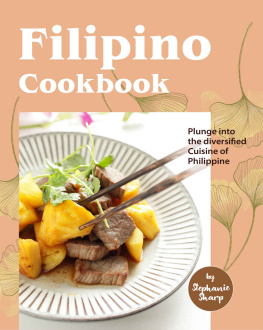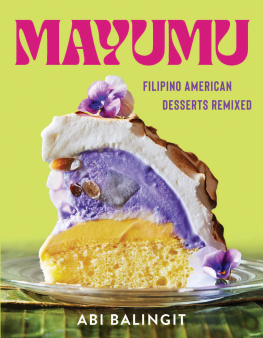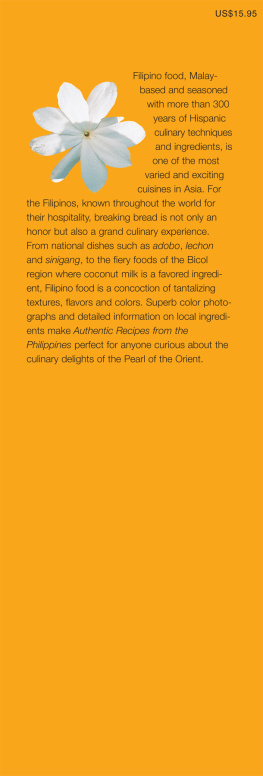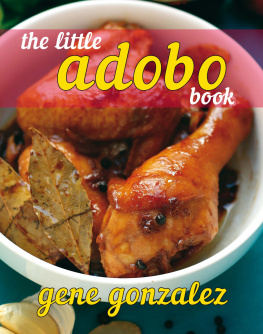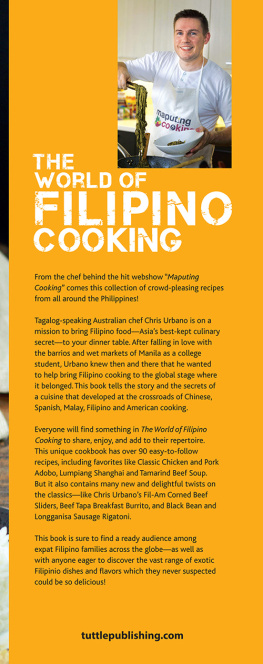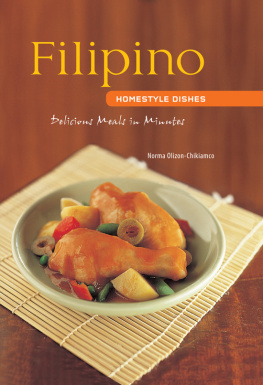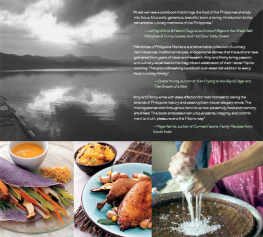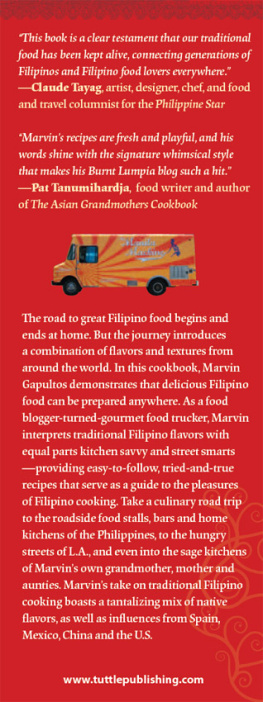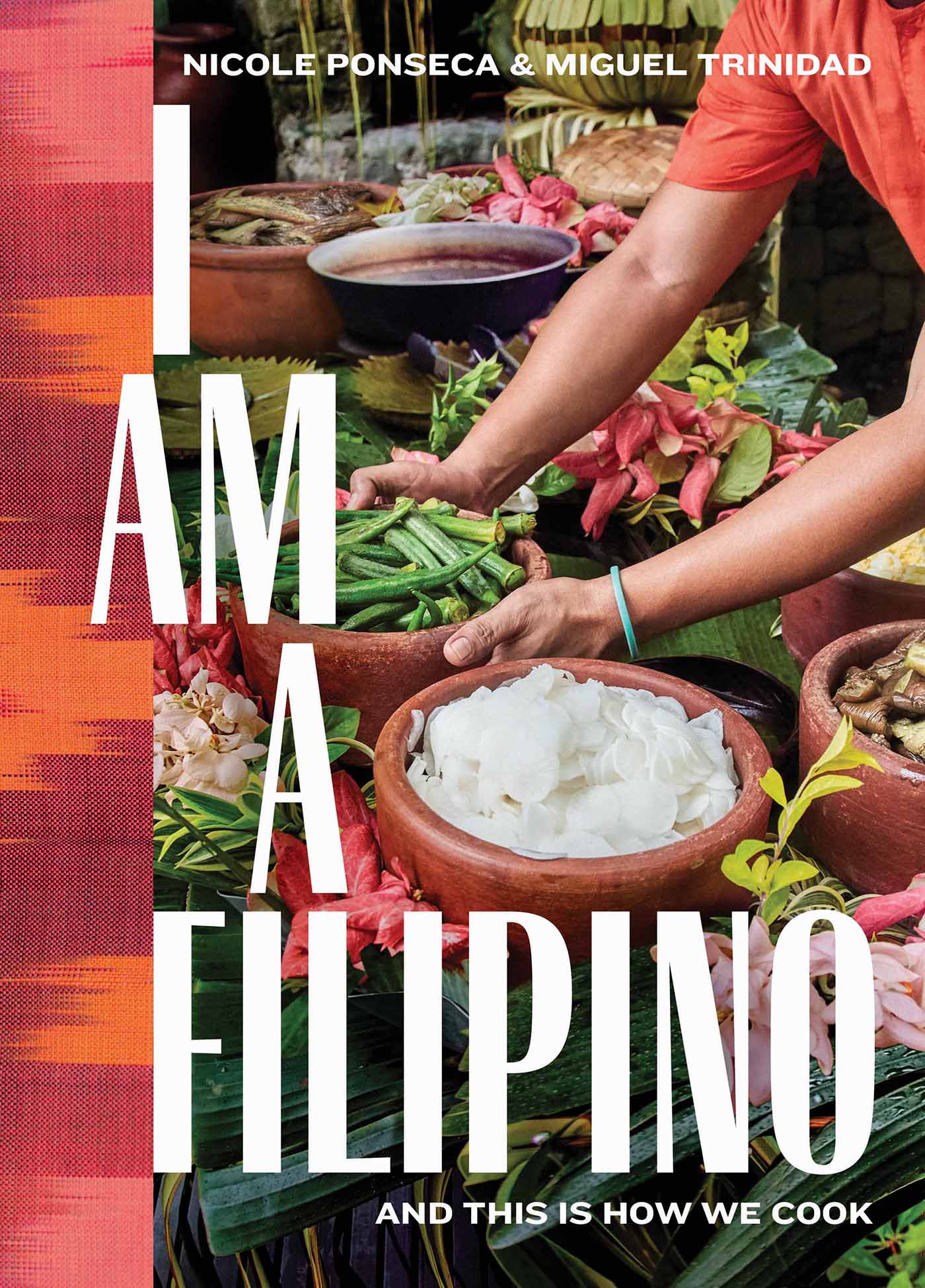

NICOLE PONSECA
& MIGUEL TRINIDAD
I
AM
A
FILIPINO
AND THIS IS HOW WE COOK
With Rachel Wharton
Foreword by Jose Antonio Vargas
Photographs by Justin Walker

To the life and legacy of Anthony Bourdain
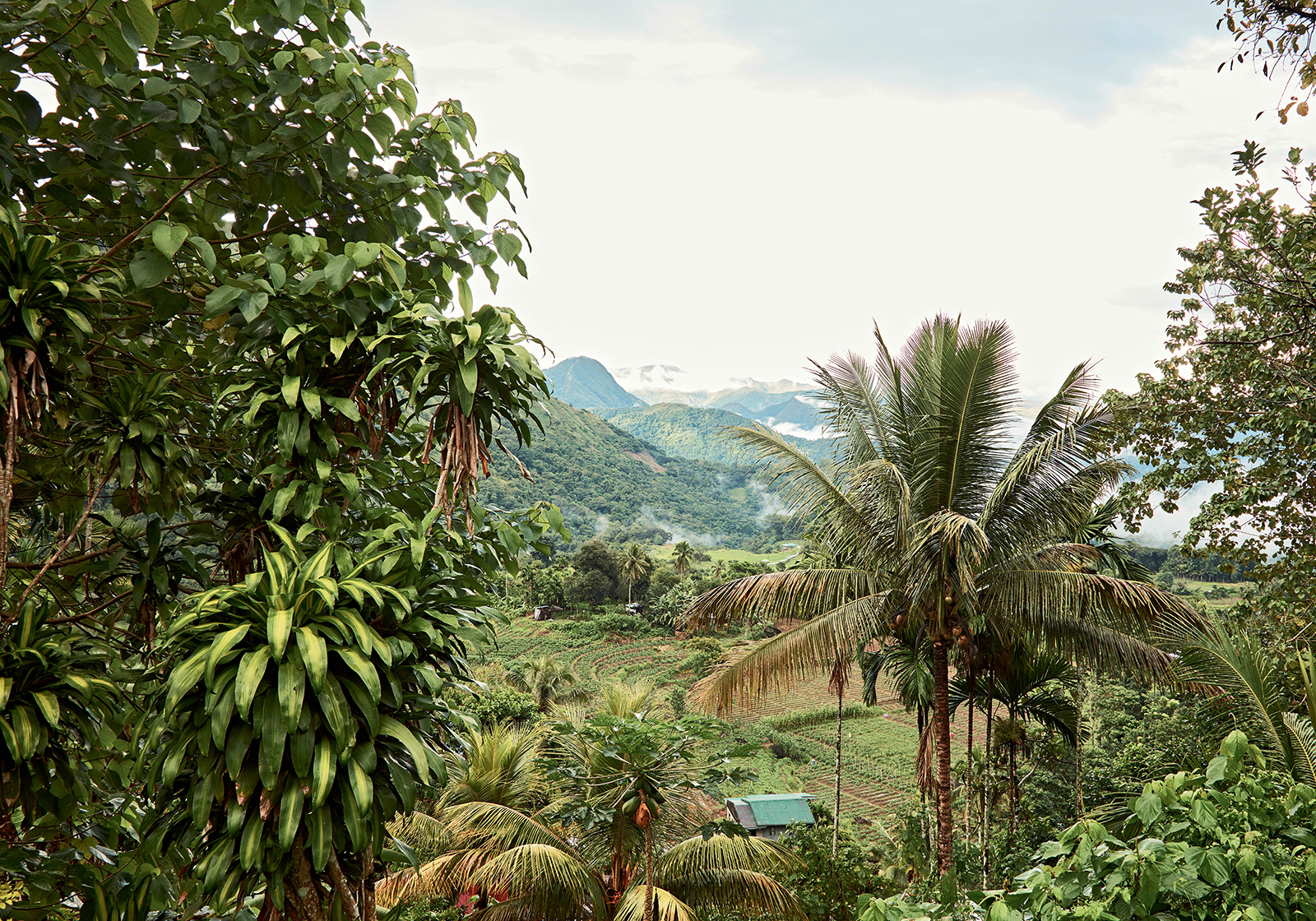
I am a Filipinoinheritor of a glorious past, hostage to the uncertain future. As such I must prove equal to a two-fold taskthe task of meeting my responsibility to the past, and the task of performing my obligation to the future.
I Am a Filipino, General Carlos P. Romulo, 1941
Contents

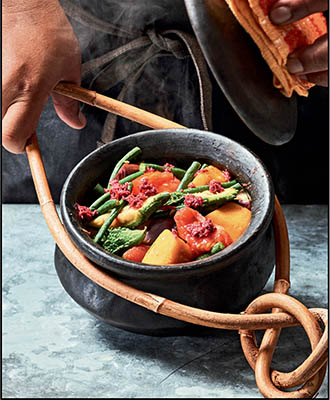
Jose Antonio Vargas
Foreword
In March 2018, the New York Times, Americas newspaper of record, declared, as if by decree: Filipino Food Finds a Place in the American Mainstream.
Three years prior, in April 2015, the Washington Post had proclaimed: At long last, Filipino food arrives.
You cannot discuss Filipino food and its arrival in the American mainstream without mentioning Nicole Ponseca, the owner of Maharlika, Jeepney, and Tita Babys, all operating within New York Citys highly competitive restaurant world, and chef Miguel Trinidad. Together, they celebrate and centralize Filipino culture like no other restaurateur and entrepreneur.
Filipino food is the original fusion food, an idiosyncratic mlange of cultures and tastes, from Malay and Arab to Chinese, Spanish, and American. All that mixing makes Filipino food wholly original, much like the Filipino people, who are scattered all over the world, a diaspora numbering in the millions, almost four million of whom are in the United States. We are our food, with a special kind of pride that permeates the preparation and presentation of every delicacy. Nicole embodies that Filipino pride, which seeps through every page and every recipe in this book.
I met Nicole on New Years Eve 2011. Like all Filipino professionals in New York City, I had heard about Maharlika. There was a joke going around that when you met someone Filipino, or someone who knew someone who was Filipino, the first question you asked them was Have you been to Maharlika? To kick off 2012, I wanted to introduce my friend Jehmu Greene, an African American woman from Texas and the former president of Rock the Vote and the Womens Media Center, to Filipino food, which she hadnt tried before. I figured it was time to see if Maharlika lived up to all the hype.
Upon entering the restaurant, walking past a chalkboard featuring the Tagalog Word of the Day, I was struck immediately by the crowd. There were some Filipinos, but there were more non-Filipinos. Up to that point, Id never seen non-Filipinos eat at a Filipino restaurant without a Filipino friend serving as the culinary translator, explaining what bagoong is (a paste of salted seafood) and the necessity of suka (vinegar). The bigger shock, however, was the menu, filled with all the dishes I grew up eating in the Philippines. Dinuguan was listed as dinuguan, not as chocolate meat or some other whitewashed name to make it more palatable and accessible to Americans. It was as if my cultureand food strikes at the very heart of every culturewere being exposed, not out of shame but out of love. Unabashed, unapologetic, fearless love.
When I realized that the woman with the big, warm smile who was busy serving tables was one of the owners, I couldnt help but pepper her with questions.
Why did you open this restaurant? I asked.
This is what Nicole replied to me, and to anyone whos ever asked that question: I wanted to change the conversation about Filipino food.
Nicole has more than changed the conversation about Filipino food. Part cultural ambassador, part epicurean anthropologist, part pioneering entrepreneur, she has led the Filipino food movement, which, over time, has touched every corner and every nook of what makes up Filipino culture. Instead of merely criticizing and deconstructing how Filipino food was being framedand who was doing the framingNicole and Miguel got to work, constructing an idea from scratch and executing a different vision. Whats more, theyve done all of this in a food industry where very few people of color thrive, in the process leading a seismic shift in how the global Filipino community thinks about food, identity, entrepreneurship, and what it means to claim ourselves. We all, Filipinos and non-Filipinos alike, are the beneficiaries of what theyve built.
Maraming salamat talaga, Nicole and Miguel. Thank you very much.
Jose Antonio Vargas, the founder and CEO of Define American, is a Pulitzer Prizewinning journalist and the author of Dear America: Notes of an Undocumented Citizen.
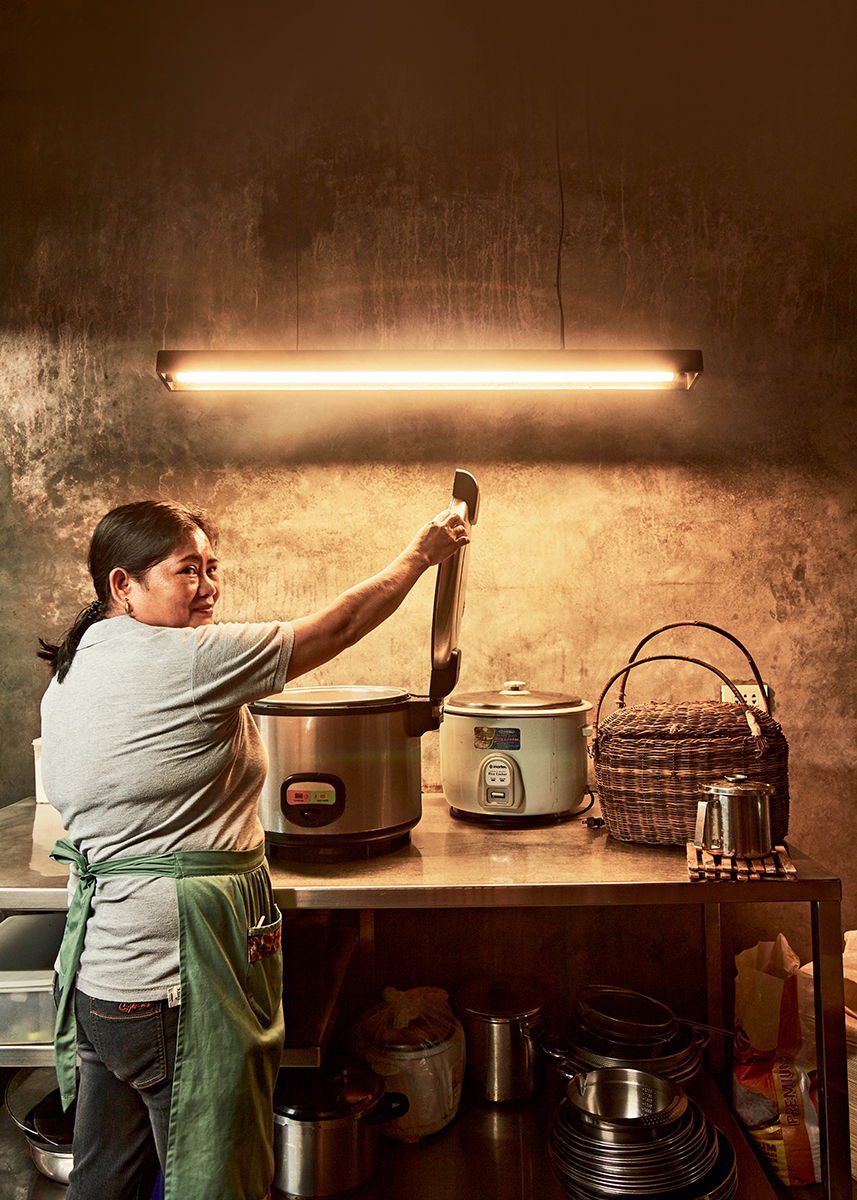
Introduction
Why Not Filipino Food?
This is not just a cookbook. Its a manifesto.
For most of my lifetime, Filipino food was overlooked or treated as an afterthought. Sure, there were a handful of eateries for families like mineimmigrants who wanted a taste of home and the convenience of having someone else cook. These little enclaves were mostly mom-and-pop-type places that housed a small grocery and a steam table perpetually filled with Filipino staples. The people who worked there greeted you like family, and it was common to call them Uncle or Auntie.
Every now and then, youd find a few non-Filipinos who were either related to someone Filipino by marriage or knew to make the trip to a strip mall in the suburbs for a taste of Filipino food.
Somehow, the complex beauty of what Filipinos actually cooked at home or ate in the Little Manilas always remained hiddenstuck in the shadows of our kitchen cupboards, wedged between Mama Sitas flavor packets, bottles of patis (fish sauce), and cans of Spam. Meanwhile, the foods of our Asian sistersThailand, Vietnam, Korea, Malaysia, and Indiawere becoming mainstream and getting a lot of attention.
Why not Filipino food? Its not because we dont have the numbers. With more than 3.5 million Filipinos living in the United States, we are its second-largest population of Asian Americans after the Chinese. In many American citieslike San Diego, where I grew upFilipinos are by far the largest immigrant group. We are part of the fabric of many cities that rely on our Filipino nurses, migrant workers, military servicemen and -women, professionals, and Overseas Filipino Workers (OFWs).
And its not because what Filipinos eat isnt universally delicious. Our pansitnoodle dishescan take the form of everything from a vegetable saut to a decadent seafood bisque. Our barbecue skewers marinated in sugarcane vinegar, which renders the meat sweet and juicy, are popular potluck fare. The list of iconic Filipino must-eats includes the fresh seafood dish dressed in coconut milk, ginger, and birds-eye chiles called
Next page

